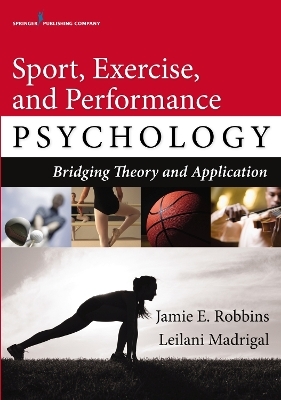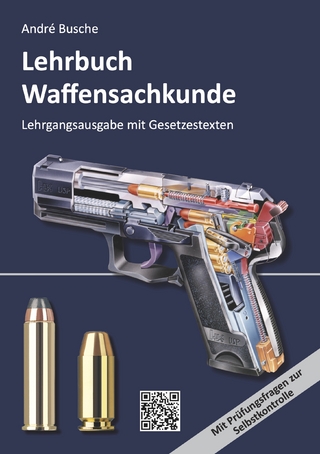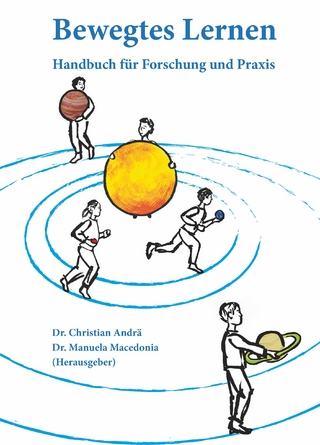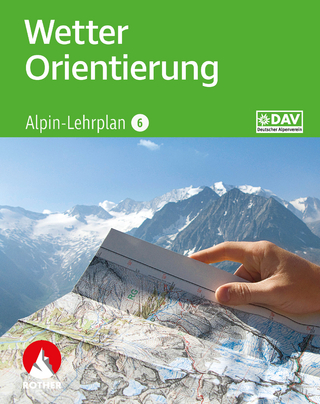
Sport, Exercise, and Performance Psychology
Springer Publishing Co Inc (Verlag)
978-0-8261-2968-0 (ISBN)
This concise, engaging text, distinguished by its skillful integration of theory and practice, addresses the key principles of sport, exercise, and performance psychology. It reflects the broadening of sport psychology studies to encompass more widespread human performance research. Emphasizing practical applications of theory, the book helps students interested in pursuing a career in sport and exercise psychology, as well as those focused on such occupations as coaching and athletic training, to recognize the applicability of sport and exercise psychology principles to their everyday lives and future careers.
To avoid an overabundance of extraneous theories and research, the text takes a streamlined “less is more” approach by focusing on just the core theories underpinning sport psychology. Chapters address such essential concepts as individual differences, personality, motivation, stress and coping, decision making, and burnout in the context of human performance. Bringing these topics to life are companion “Applying the Concepts” chapters demonstrating how these principles are directly applied in real-life situations. Interviews with researchers, coaches, athletes, and other individuals from performance-intensive professions vividly reinforce the book’s content. Additionally, the text contains insights on theories and research findings that students can apply to their own experience. Critical thinking questions and “Individual Challenge” activities promote understanding and further exploration. An instructor’s package includes a test bank and PowerPoints.
KEY FEATURES:
Illustrates key theories and research with practical applications
Written in a concise and easily accessible manner
Provides examples of practice applications in sport, exercise, and other areas of human performance
Includes interviews with researchers, practitioners, coaches, athletes, and other performance-intensive professionals
Explains how theoretical concepts can be applied to a student’s personal experience
Jamie E. Robbins, PhD, is Associate Professor, Department of Physical Education and Exercise Science, Methodist University, Fayetteville, NC. Leilani Madrigal, PhD, is a Postdoctoral Fellow, Athletic Performance Laboratory University of Nebraska.
Contents
Preface
Class activity
Individual challenge
Chapter questions
1: Introduction to Sport, Exercise, and Performance Psychology
Education and career inception
Research in the field
Reading research
Benefits of this class
Benefits of sport, exercise, and performance psychology in society
ow it all began …
Why should you read this book?
Conclusion
Class activity
Individual challenge
Chapter questions
2: Understanding Biological and Social Influences on Performance
Nature versus Nurture
The ongoing debate
Common errors that lead to misinformation
Talent development
Why the interest in experts?
Class activity
Individual challenge
Chapter questions
3: Individual Differences and Identity
Racial/ethnic identity
Concluding thoughts on racial identity
Gender identity and sexual identity
Gender identity
Sexual identity
Conclusion
Class activity
Individual challenge
Chapter questions
4: Individual Differences and Identity: Applying the Concepts
Athletic identity
Exercise identity
Creating a shared group identity
Class activity
Individual challenge
Chapter questions
5: Personality
Jung’s theory of personality
Personality debates
Why consensus is elusive
An interactional approach
Testing personality characteristics
Personality and performance
Mental toughness
Conclusion
Class activity
Individual challenge
Chapter questions
6: Personality: Applying the Concepts
Interpreting and faking
Personality and group or team dynamics
Team cohesion
Personality and team cohesion
Team building
Leadership and personality
Interview with professor of military science
Class activity
Individual challenge
Chapter questions
7: Motivation and Commitment
Theories of motivation
What is motivation without commitment?
Interview with an expert
Conclusion
Class activity
Individual challenge
Chapter questions
8: Motivation and Commitment: Applying the Concepts
Overcommitment
Runner’s collapse
Exercise addiction
Disordered eating
Amotivation and dropout
Strategies for creating a healthy motivation and commitment
Meet their needs
Incorporate mental imagery
Goal setting
Class activity
Individual challenge
Chapter questions
9: Self-efficacy, Confidence, and Fear of Failure
Self-efficacy theory
Sport-specific confidence
Tripartite conceptual model of relational efficacy beliefs
Overconfidence
Fear of failure
Behavioral effects
Conclusion
Class activity
Individual challenge
Chapter questions
10: Self-efficacy, Confidence, and Fear of Failure: Applying the Concepts
Introduction of strategies
Value yourself and focus on strengths
Prepare for the situation
Focus on process and don’t compare yourself to others
Use positive self-talk
Confidence is helpful, but not essential to performance completion
Class activity
Individual challenge
Chapter questions
11: Stress and Anxiety
Distinguishing stress from anxiety
Benefit or detriment?
Detriments of chronic stress and anxiety
Theoretical explanations
Benefits of stress and anxiety
The big debate
Terminology to move forward
High stress/anxiety personality types
Stress resistant personality characteristics
Hardiness
Mental toughness
Optimism
Conclusion
Class activity
Individual challenge
Chapter questions
12: Stress and Anxiety: Applying the Concepts
Stress categories
Common athlete stressors
Common stressor #1: mistakes
Common stressor #2: injury
Common stressor #3: parents
Parent stressors
Coaching stressors
Referee stressors
Sources of stress for exercisers and other performers
Application: steps to minimize stress and anxiety responses
Cognitive strategies
Step 1: identify and address the feelings of stress and anxiety
Step 2: minimizing the worry
Step 3: target controllable stressors
Step 4: modify your thoughts
Class activity
Individual challenge
Chapter questions
13: Coping and Controlling Arousal
Theories of arousal and performance
Coping: definition and theory
Coping strategies
Measuring coping
Influences on coping
Conclusion
Class activity
Individual challenge
Chapter questions
14: Coping and Controlling Arousal: Applying the Concepts
Cognitive strategies
Self-talk
Mindfulness training
Arousal-focused strategies
Deep breathing
Progressive muscle relaxation
Multipurpose coping strategies
Physical activity
Music
Stress, anxiety, arousal, and coping in action
Conclusion
Class activity
Individual challenge
Chapter questions
15: Injury
Antecedents to injury
Response to injury and rehabilitation
Importance of understanding the injury experience
Injury and the athletic trainer
Conclusion
Class activity
Individual challenge
Chapter questions
16: Injury: Applying the Concepts
Minimizing injury risk
Proper nutrition
Proper sleep
Promoting injury recovery
Goal setting
Social support
Manage your mood
Conclusion
Class activity
Individual challenge
Chapter questions
17: Burnout
Doing more or doing too much?
Burnout
Youth burnout
Cognitive-affective model of stress and burnout
Factors related to burnout
Motivation and burnout
Perfectionism and burnout
External factors
Avoiding burnout
Less is more
Change the environment
Beware of specialization
Support don’t pressure
Burnout symptoms
Burnout in various populations
Conclusion
Class activity
Individual challenge
Chapter questions
18: Burnout: Applying the Concepts
Listen to your body and mind
Shift your goals
Strive to improve, not be perfect
Find your balance
Class activity
Individual challenge
Chapter questions
19: Decision Making
Biases
Ease of recall and retrievability bias
Misconception of regression bias
Confirmation bias
Overconfidence bias
Additional influences on decision making
Perception, memory, attentional capacity, and anticipation
Practice and expertise
Conclusion
Class activity
Individual challenge
Chapter questions
20: Decision Making: Applying the Concepts
Knowing yourself: how do you make decisions?
Regret and decision making
Feelings and decision making
Intuition or deliberate decision making?
Interview with a coach
Class activity
Individual challenge
Chapter questions
21: Job Opportunities
Culminating ideas on jobs in the field
Existing organizations
Certification
Class activity
Individual challenge
Chapter questions
22: Ethics
Consulting ethics
Research ethics
Class activity
Teaching
Research
Consulting
Individual challenge
Chapter questions
Index
| Erscheinungsdatum | 28.09.2016 |
|---|---|
| Verlagsort | New York |
| Sprache | englisch |
| Maße | 178 x 254 mm |
| Themenwelt | Sachbuch/Ratgeber ► Sport |
| Weitere Fachgebiete ► Sportwissenschaft | |
| ISBN-10 | 0-8261-2968-4 / 0826129684 |
| ISBN-13 | 978-0-8261-2968-0 / 9780826129680 |
| Zustand | Neuware |
| Haben Sie eine Frage zum Produkt? |
aus dem Bereich


